However looking at it from a different angle, you get an altogether different
picture. This graph shows the percentage of fish belonging to certain age
/ size group. Varzuga is shown in red, Kola in green, Litsa in blue. In
Varzuga more than 90% of the fish belong to the smallest size below 3kg
in weight (horizontal axis), while Kola and Litsa produce considerable
number of multi-winter fish weighing above 5kg. There certainly is a special
attraction in swinging flies in the anticipation of a trophy fish.
Now, when your mind is set to go chase this elusive target, the first big
question is where to go. The graph on the right shows the number of salmon
that returned in the major salmon rivers of the peninsula in a year.
The unquestionable king is Varzuga river that accounts for almost half
of it. Adding the legendary Ponoi and Kola, these three rivers deliver
80% of the Kola salmon!
If we expand the scope to the Pacific, there are different kind of salmon
species much more abundant and easier to target. But there are some subtle
yet distinct differences in Atlantic salmon. Like steelhead, they react
well to the surface skating flies, and could grow to colossal size due
to the fact they survive the rigor of spawning and live long.
Yet we must be aware their future is not at all secure. Partly because
of the climate changes, and because of the pressure from commercial fishing,
out of ten thousand fry, only 5 grow up to reproduce. We sportfisherman
must not only admire them for the rarity value, but behave prudently for
the sustainable future of this precious gamefish.
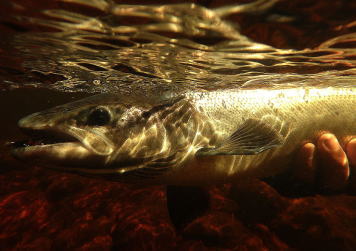
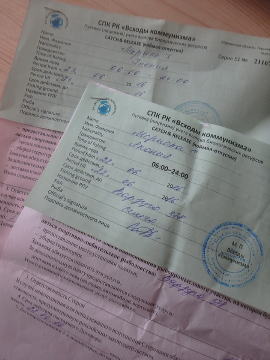
Salmon
We can name multiple attractions that makes salmon fishing different. Its
beauty and perfection, its long angling history, its harsh northern environment
to name a few.
But one that we have to reluctantly admit is the fact salmon stock are
getting depleted in most part of Europe. And the few precious exceptions
arguably are Iceland and Russia.
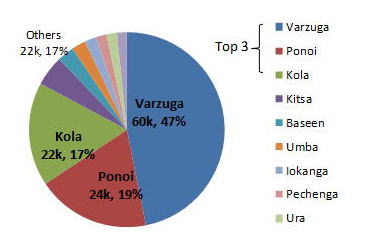
Russians are great outdoorsmen and carpenters. Many of the lodges are built with a respectable quality and always boasts Banya - sauna bath.
Lodging fee varies whether it offers salmon fishing or not. Those lodges
that specializes in trout or coarse fish are inexpensive - 100euros will
be enough to give a family all the feed and comfortable beds. Meanwhile
price go up significantly as soon as salmon fishing gets involved. .Local
guesthourses are reasonable at around or sometimes below 100euros per person
per day, but premium lodges marketed for foreigners are at least 3 times
dearer. This is where some good research is needed before start tying the
flies.
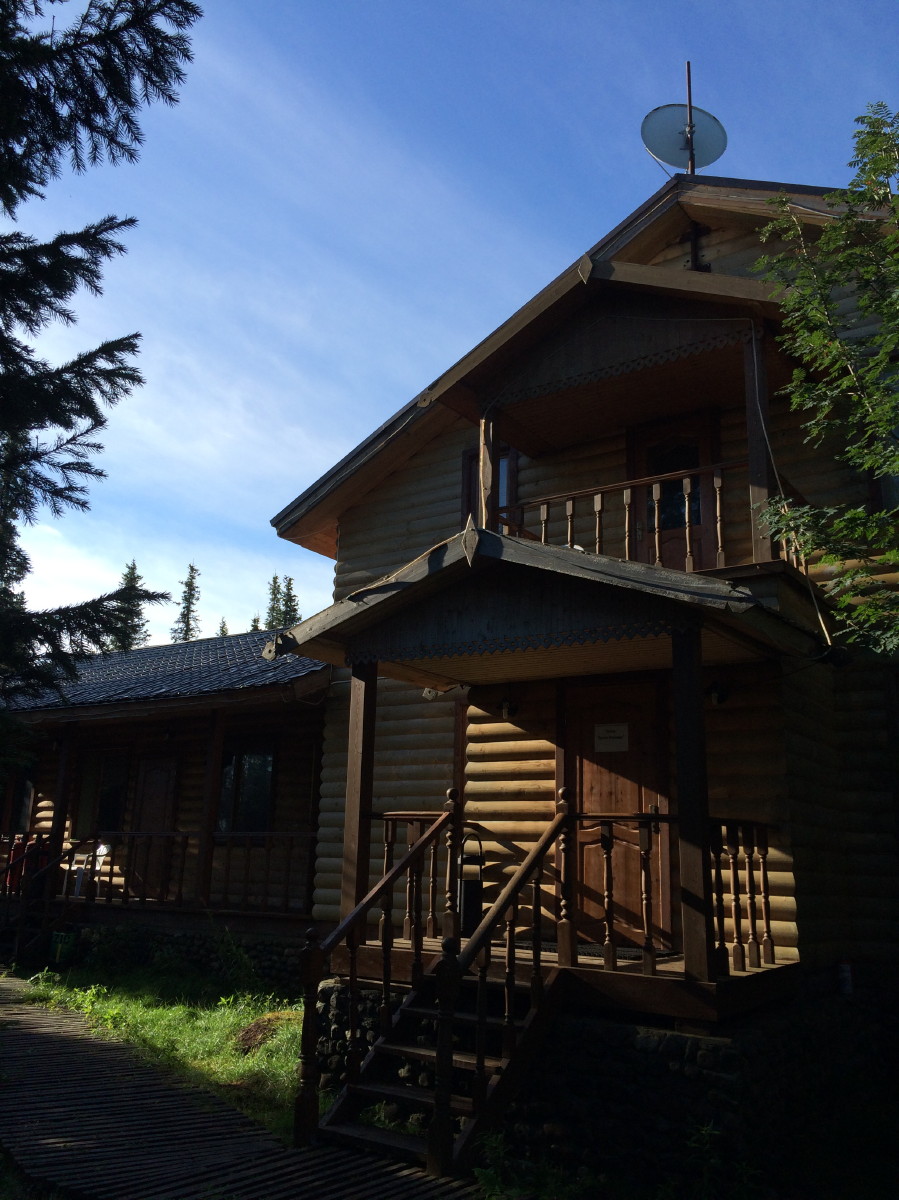
Having said thus far, I am not a faithful Atlantic salmon purist. I would
rather prefer chasing more numerous, friendlier salmon on the Pacific ocean
myself. However for now while living in Moscow, I have a reason to press
myself forward a little bit, to taste the endless patience, bitter disappointments,
and occasional moment of exhilaration. Well, let's see how far I may be
able to put up with it!.
- Back
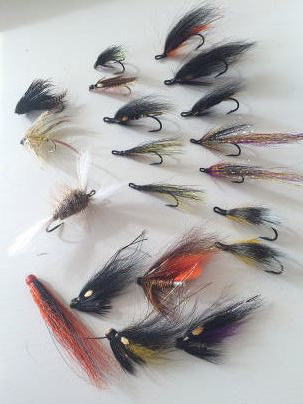
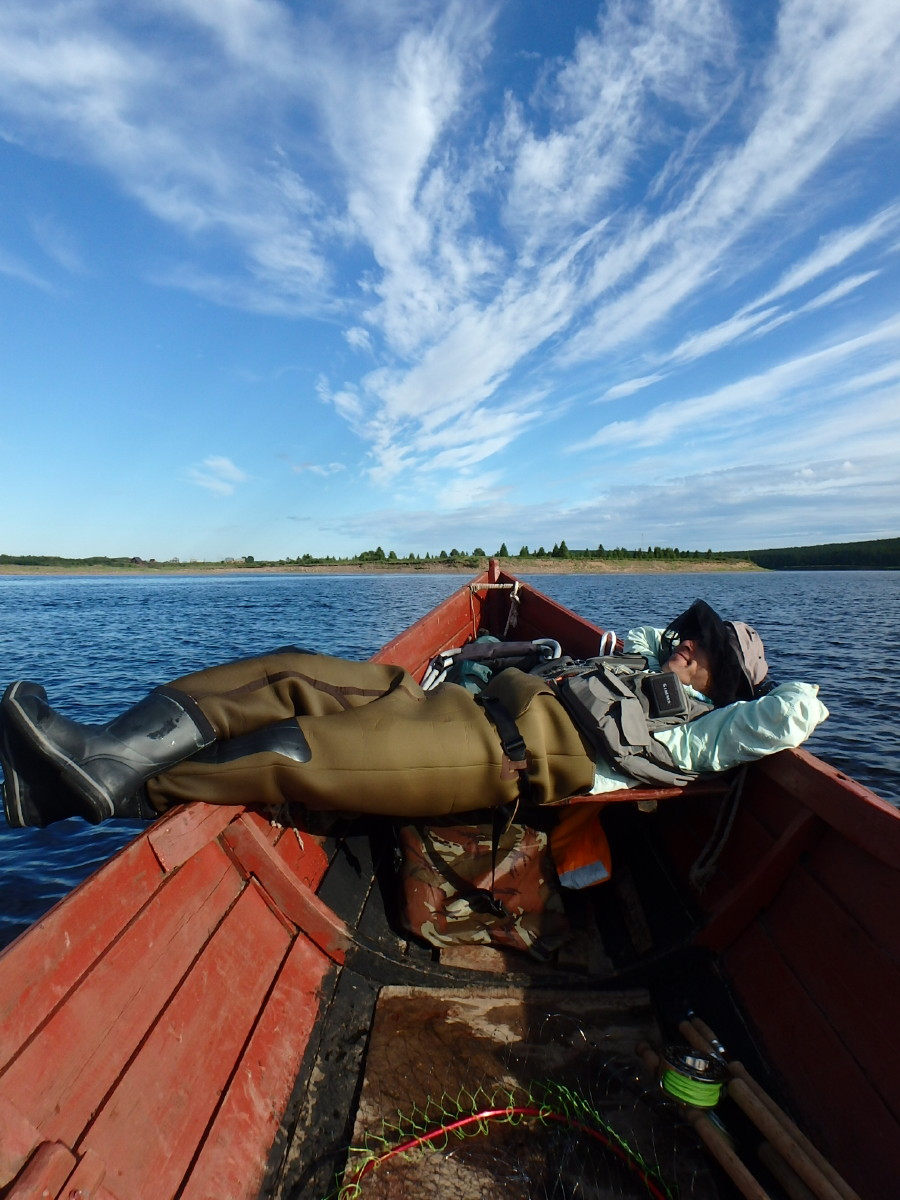

Due to its strategic importance, much of the territory used to be off limits
to the civilian travellers during the Cold War. Only after the fall of
Soviet Union, its vast wilderness and salmon fishing potential were ''disclosed''
to the eyes of the westerners.
If you place your pointer on the map above, you can see the whereabouts
of the well known salmon rivers. Arguably the king of them all, river Ponoi,
flows on the eastern slope down to the Barents sea.
There also are numerous lakes and countless marshlands fed by the snowmelts.
The fishing potential of the northern frontier is immense.
Lodging
To solve all those difficulties, many anglers book their trips through
fishing tour agent or the specialized lodges. They will offer services
from visa arrangement to the transportation, and of course guiding on the
water. Certainly not cheap, but the value they create in this not easy
country is worth the money for those who can afford.
Fishing
Now a quarter of a century later, we can enjoy increasing freedom there
even as a foreigner. While some of the well known fisheries are still exclusive
and expensive to fish, there are increasing opportunities for visitors
of modest budget like ourselves.
Infrastructures are limited in many places, but travelers with a sense
of humour should find Kola an truly inspirational wonderland.
Salmon fishing ticket in public beat will typically cost 1,600 rubles
(some 25euros) per day. More popular premier venues, such as Kola river,
will cost about three times more, 4,500 rubles (75euros) for us foreigners,
which is not cheap but acceptable - if you consider how much you would
pay in Scotland.
But the difficulty is in its arrangement. As I noted in the Travel Tip,
there are not enough detailed information in English where to buy license,
or even before that, how to arrive there. Some good rivers are beyond the
areas where foreigners may roam about, while others even more far off can
only be reached by air or by sea.
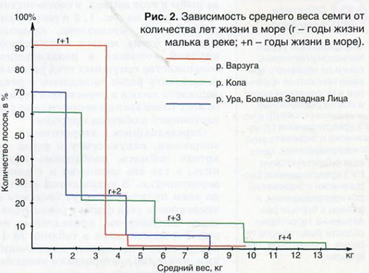
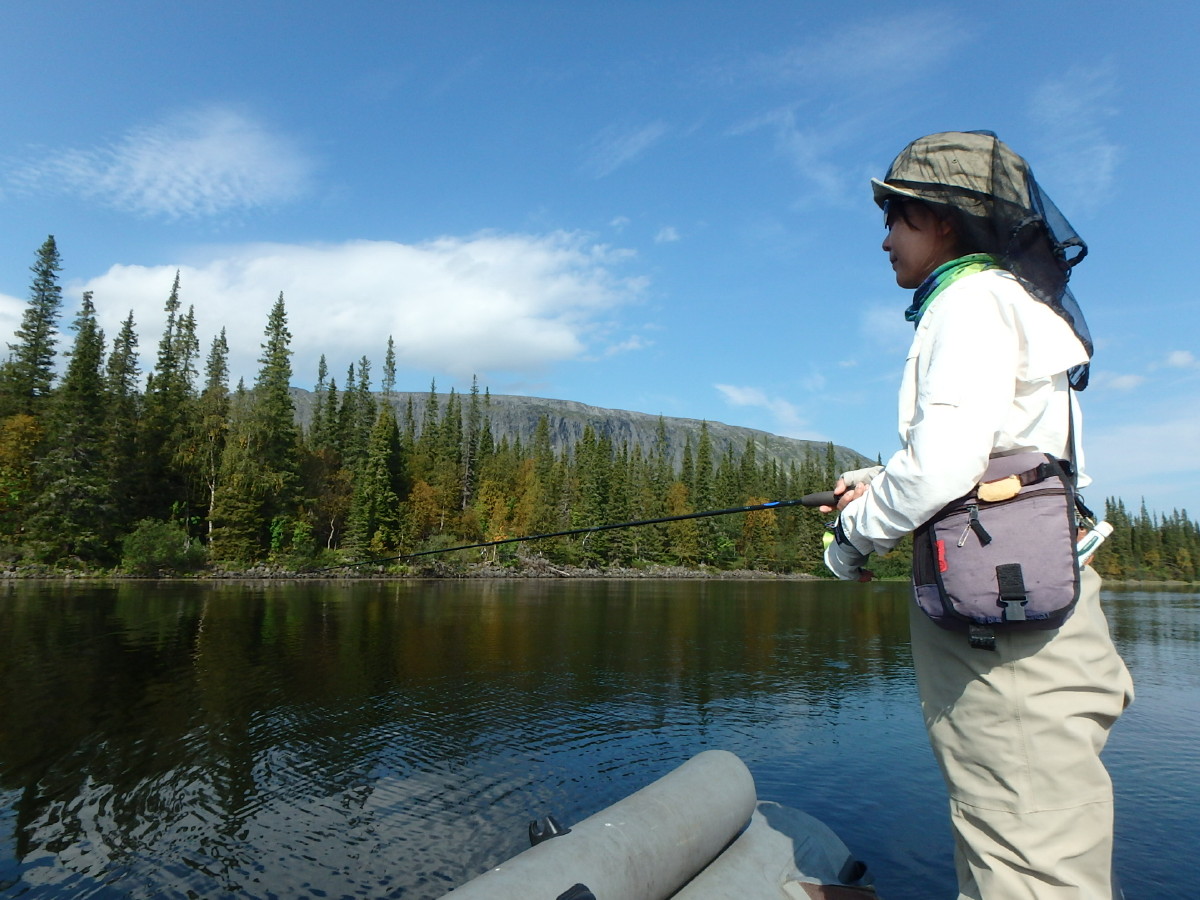
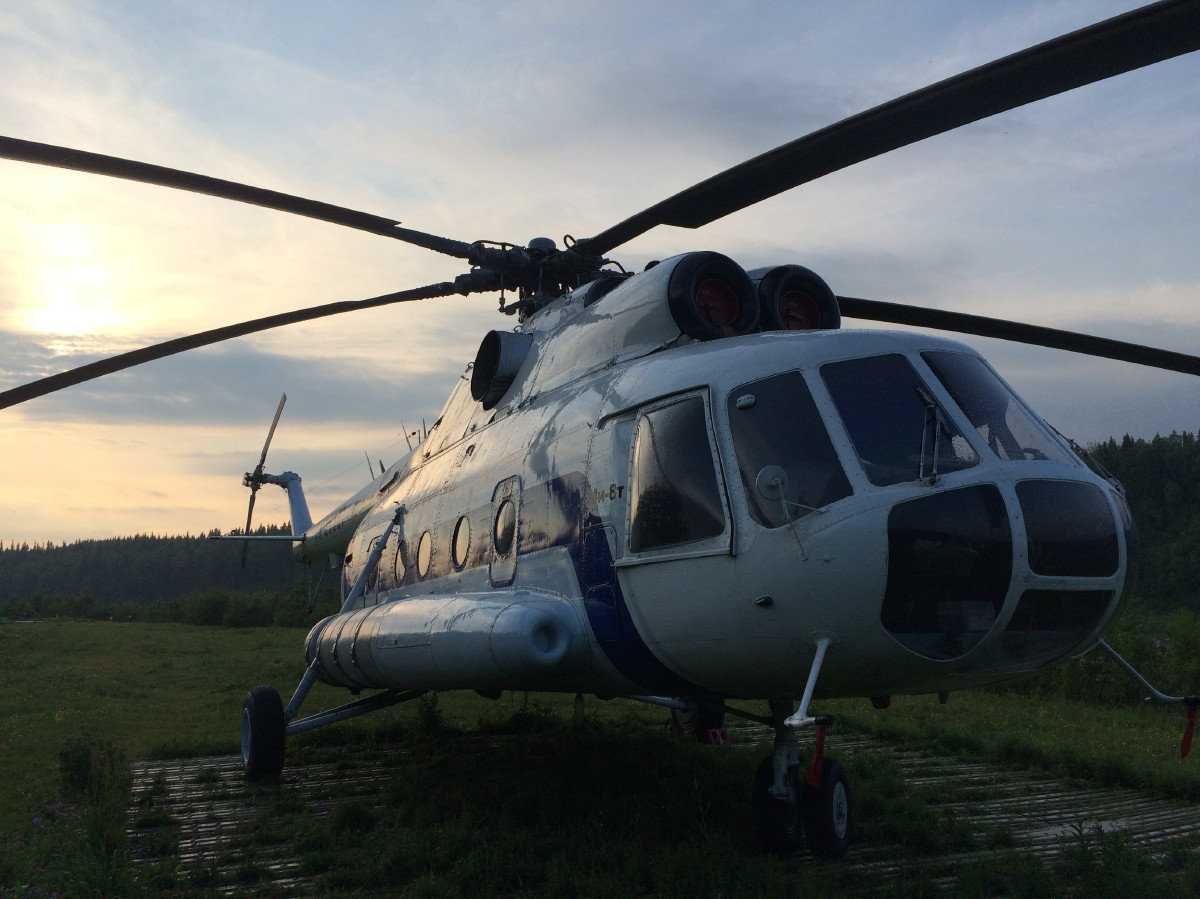

Fishing there was regulated and 'controlled' - with a degree of success
- by the government. The dark age arrived as Soviet union crumbled. Having
lost the orientation and means of life, people were left to survive on
their own.
Poaching was rife, regulation was ignored if there was one at all. Many
salmon rivers were exploited badly, except those located in the remotest
areas - such as Ponoi.
As the fishing in Ponoi was 'discovered' by the westerners, Russians came
to realize the economical benefit of fishing tourism at last. With a strong
tie up with the local authorities, Salmon fishing in Kola gradually became
a serious business in the '90s.
History
From pre-historic time, the place was inhabited by nomads of the north,
Saami people. In 12th century the land was invaded by Norway from the west,
and Novogorod from the south. As the reign of Novogorod was undermined
and eventually taken over in 1478, Kola peninsula became a part of what
to become today's Russia.
During the Soviet days, Kola became an important base to harvest marine
riches, with Kolkhoz / Sovkhoz fishing villages scattered around.
Geography
Located at the very north western end of Russia, protruding into the sea
of Barents, Kola peninsula is the unchallenged mecca of Atlantic Salmon
of the nation - or of the world for that matter.
Almost entire peninsula is above latitude 66 - the arctic circle. Yet thanks
to the warm Atlantic current, Murmansk, the capital city boasts world's
northern most port that doesn't freeze up through out the year.
 Kola Peninsula
Kola Peninsula




